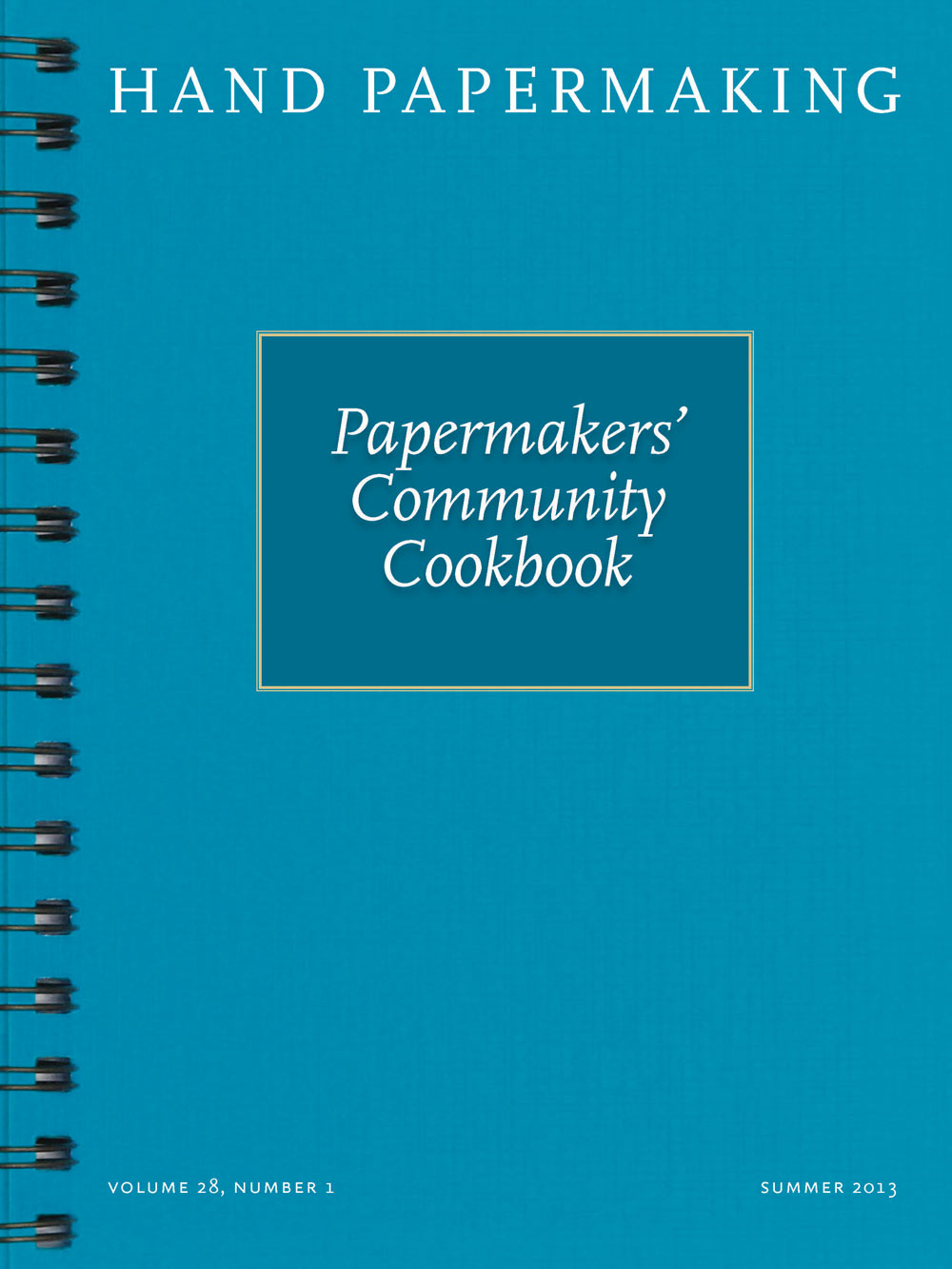HEAVY EXTERNAL SIZE FOR A SMOOTH TURKISH AHAR FINISH 1 tablespoon methyl cellulose powder dissolved in a pint of distilled water Bowl and sponge or squeegee for application Bone folder, a marble or glass egg, or a flat agate burnisher This recipe produces a hard paper surface that resembles a highly polished Turkish ahar paper. Originally made with egg white (from an egg laid on the day of preparation) and mineral alum, this finish allows the scribe to wash away mistakes. Ahar takes six months to a year to cure before the paper is ready to use. To simulate this surface, start with a smooth paper; a plate finish is best. Burnish every part of the paper. A marble or glass egg or a flat burnisher is easiest on the hands. Press firmly on the paper with the burnisher and polish systematically from top to bottom and then from left to right. (This is time consuming, but not as labor intensive as ahar paper.) Apply two layers of the methyl cellulose solution with a squeegee or a sponge. While the paper is still damp, give it a hand-rubbed finish. heavy external size for a toothy surface 1 tablespoon methyl cellulose powder dissolved in a pint of distilled water Bowl and sponge or squeegee for application Earth pigment, whiting, or powdered glass This recipe produces a toothy paper surface that grabs the calligraphy pen and works well with pastels. Add 1 to 3 tablespoons of gritty earth pigment to the pint of methyl cellulose solution. Dab one to three layers of the gritty solution onto a 120-pound paper (or thicker). There is no need to polish the paper beforehand. Colored pigments tint the paper while whiting or powdered glass only give the paper a tooth. HOW TO MAKE AND USE POUNCE BAGS Silk handkerchief, 6 x 6 inches or larger Rubber band or 8-inch-long string Pounce (see below for recipes) Pounce is used when a paper bleeds slightly. Pounce fills the spaces between the paper's surface fibers with a fine powder, reducing bleeding and increasing the paper's surface tension. The handkerchief sifts only fine pounce particles onto the paper surface. For a coarser application, use a linen handkerchief. Lay the handkerchief flat on a table. Place a tablespoon of the pounce powder in the middle of the handkerchief. Gather the corners of the handkerchief in one hand. The pounce will create a mound. Tie this mound in place with the string or rubber band. To use the pounce bag, hold the handkerchief and tap the pouncefilled end on the paper. Use the loose ends to spread the pounce evenly. Refill as needed. Example of external sizing on lightly sized cotton paper. The right side of the paper was polished with a bone folder and sized with methyl cellulose. Calligraphy by the author, written with a pointed pen. All photos by and courtesy of the author CASCARILLA (GROUND EGGSHELL) POUNCE 1 dozen rinsed eggshells 1 pint white vinegar 1 gallon distilled water A bowl (one quart or larger), mortar and pestle or blender Put eggshells into a bowl with white vinegar. Pour in enough distilled water to cover the eggshells. Stir and let stand overnight. The next day, pour off the liquid and rinse the shells with distilled water. Keeping the shells in large pieces will make the next step easier. Rub as you rinse them. If you use brown eggs, the brown easily rubs off. You will see that the eggshells' inside membranes have toughened. Remove and discard the membranes. Collect the cleaned, membrane-free shells in either a mortar or a blender. Grind them in the mortar or puree them in the blender. (Grinding in a mortar goes faster when the shells are super dry.) To puree in the blender, add enough distilled water to the eggshells for the blender to work. Cover and blend on puree until the paste is as smooth as talc. Dry the cascarilla before using by spreading it onto a Plexiglas sheet or other non-reactive surface. When dry, use cascarilla in a pounce bag. GUM SANDARAC POUNCE Gum sandarac tears Linen handkerchief Rubber band and a hammer Gum sandarac is a plant resin with a strong, natural odor that can trigger allergic reactions. Use with caution. Gum sandarac increases the surface tension of papers. Traditionally a mortar and pestle are used to grind the resin into a fine powder. Skip the mess and make the pounce bag with the whole tears inside the bag. After tying it closed, whack the tears several times with the side of a hammerhead. Plenty of gum sandarac will be crushed finely enough to sift through the fabric. Hammer again as needed. I rarely have to hit my gum sandarac more than once a year. Example of pouncing with gum sandarac on unsized mulberry paper. The area where "Peace" is written was heavily pounced. Calligraphy by the author, written with a broad pen.






